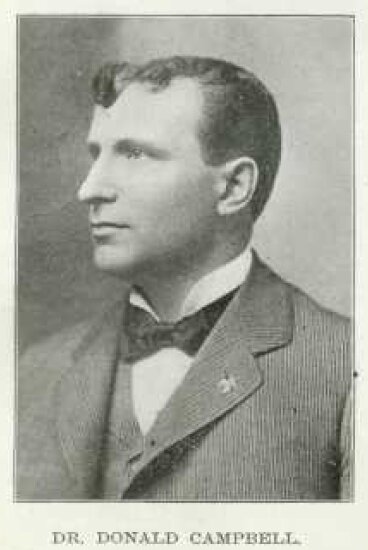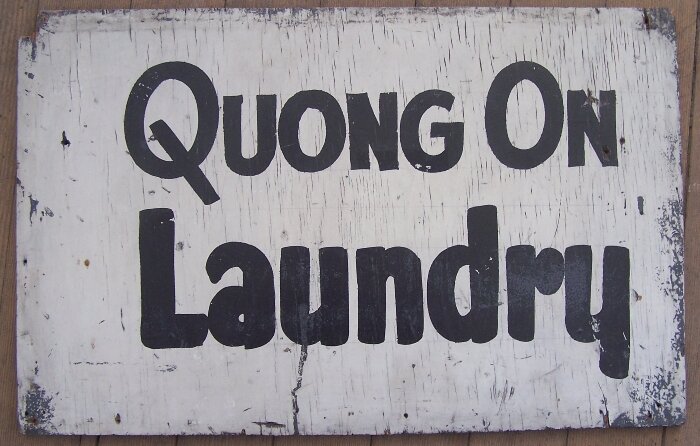
Butte, America’s Story Episode 60 - The Fires of 1912
The original 1886 Thomas Block on Park Street between Main and Dakota Streets burned down September 1, 1912 in one of the most costly conflagrations in Butte’s first 75 years, with losses estimated at nearly $221,000 in dollars of the day.

Butte, America’s Story Episode 59 - Julian Eltinge
Julian Eltinge was perhaps the greatest female impersonator of the 20th Century. Born William Julian Dalton on May 14, 1881, in Newtonville, Massachusetts, he arrived in Butte as a child with his father, a mining engineer, and as a teenager began to perform dressed as a woman or girl in Butte saloons.

Butte, America’s Story Episode 58 - Babcock’s Hats & Furs
The T-shaped alley west of North Main between Broadway and Granite has been there with that geometry since before 1884. The three-story alley building at the corner of the T is connected by an overpass to 117 N. Main Street, part of the Dellinger Block at 117 N. Main.

Butte, America’s Story Episode 57 - Centennial Hotel
The two-story Centennial Hotel included a saloon run by Beal’s son-in-law George Newkirk, plus an office, the 30-by-40-foot dining room, kitchen, laundry, wood house, and a two-level outhouse, as well as a nearby ice house.

Butte, America’s Story Episode 56 - Sarah Bernhardt
When Sarah Bernhardt came to Butte in September 1891, the Daily Inter Mountain newspaper called it “the principal topic of the town,” the dramatic event of the decade for Montana.

Butte, America’s Story Episode 55 - Bella Crangle
The chief stamp clerk for the post office on Broadway was Bella Crangle. She graduated from Butte High, and went to work in the stamp department in 1898. The Anaconda Standard (April 27, 1902) gave her “the proud distinction of having met every man, woman and child of every nationality, color and creed in the city” in the course of her work.

Butte, America’s Story Episode 54 - Union Hall Destroyed
The Butte Miners Union Day Parade on June 13, 1914, turned into a riot pitting union factions against each other. The ten days following were tense, but little if any violence took place in Butte.

Butte, America’s Story Episode 53 - The Hancocks of Caledonia Street
The 900 block of Caledonia was home to four related families for much of the early 20th Century. Their diverse occupations connect us to much of Butte’s history. The three similar homes at 943, 947, and 951 Caledonia were all built about 1898, probably by the same builder.

Butte, America’s Story Episode 52 - Chinese Boycott
Intense discrimination and prejudice against the Chinese was common in 19th Century Butte and throughout the west. How did the Butte Chinese community survive? The Butte Bystander, an unabashedly pro-union newspaper, supported efforts at boycotting the Chinese.

Butte, America’s Story Episode 51 - Donald Campbell
Young Doctor Campbell came to Butte, penniless, in the spring of 1892, quickly rising to prominence not only in Butte but throughout the west. By 1896 he was a state representative to the American Medical Association.

Butte, America’s Story Episode 50 - Zig
C.O. Ziegenfuss is certainly not a well-known name in Butte history, but he was a renowned newspaperman of the last quarter of the 19th Century. He seemed to follow trouble, and he made the news several times while reporting it.

Butte, America’s Story Episode 49 - Fire Station No. 3
The growing west side was served by its own fire station beginning in 1901. It stood in the angle between Caledonia and Excel that was cut by the BA&P railroad. A photo from 1901 shows the fire station in its last stages of construction.
Butte, America’s Story Episode 48 - Iconography
Once when I was leading a walking tour, an observant student from Glendive, Montana, asked me about the significance of the Star of David in the stained glass in the 1890 City Hall (24 East Broadway). My answer was that it was not religious, but simply a popular geometric design.

Butte, America’s Story Episode 47 - Robert Burns
In “Sweet Thunder,” Ivan Doig describes a celebration of poet Robert Burns’s birthday, held at the Butte Public Library. Although that account was fiction, Scots and their friends in Butte did celebrate the birthday of one of Scotland’s favorite sons.

Butte, America’s Story Episode 46 - WFM Welcome to Butte
The Western Federation of Miners, was organized in Butte at a convention beginning May 15, 1893. Violent confrontations took place between unionized workers, mine owners, and the state at Coeur d’Alene, Idaho.

Butte, America’s Story Episode 45 - Henry Patterson
Architect Henry Martin Patterson was born at Savannah, Ohio, May 5, 1856, of Scotch ancestry. His father, John Patterson, a native of Aberdeenshire in Scotland, came to America in 1835, settled in New York and moved to Ohio in 1837, where he worked as a carpenter and builder.

Butte, America’s Story Episode 44 - The Meagher Guards
The Meagher Guards of Butte, “perhaps the most unique military organization of its kind in the country,” was formed in 1895. It was a completely independent military unit.

Butte, America’s Story Episode 43 - Motorized Postal Service
In January 1902 the announcement came that Butte would have two vehicles for rural mail delivery beginning the following summer. The car was a Winton Electric Car.

Butte, America’s Story Episode 42 - The Synagogue
Butte’s ethnic diversity is well represented in the synagogue at Washington and Galena Streets. The Congregation B’nai Israel temple was dedicated on February 26, 1904, but the Butte Jewish community dates to 1875. Butte’s first mayor, Henry Jacobs, was Jewish.

Butte, America’s Story Episode 41 - Quong On
A simple sign connects us to a lot of history. One of the artifacts at Butte’s Mai Wah Chinese history museum is a simple white board with black letters announcing the Quong On Laundry.